How to use 2 screens on a computer
If your computer and laptop have additional video ports like HDMI, DVI, you can use two monitors on your computer, even using multiple monitors on the same computer.This is a connection guide, using 2 screens on your computer, invite you to follow up.
You can apply the same if you want to use more screens on your computer or laptop.With the experience shared in the following article, you will expand your workspace with multiple screens that make the job more comfortable.
The first paragraph will introduce the connection port, the necessary tools when using 2 monitors on the computer, if you have enough and plugged the monitor cable into the computer, please go to the Setup step to use 2 screen on 1 computer .
How to use 2 screens on a computer
- Use 2 screens on a computer
- Project images from one computer to multiple monitors at the same time
- Pair multiple screens into a wider screen
- Operating system and support tools
- Two display modes
- Set up to use 2 monitors on 1 computer
- Tweak your mouse to multiple monitors
- Some errors of using multiple monitors
Use 2 screens on a computer
The most familiar in people's thinking is that each computer will need only one screen to view the information. However, with the price of hardware, in particular, the more monitors are reduced to acceptable levels, as well as increasing demand for multi-tasking computers, you will find that you need to mount more than one screen. image to a computer in the following cases. First, you need to project images from one computer to multiple monitors at the same time, and second, when you want to expand your screen to work at a lower cost than buying and using a large screen. .
Project images from one computer to multiple monitors at the same time
If you need to display the same information on all attached screens, emitted from a computer, you only need one video card. What you need to use is screen splitters (VGA splitters). The simplest divider is just a VGA Splitter cable that divides a VGA port into two ports, connecting to two monitors (VND 200,000).

More complicated is the box that splits VGA Splitter 1 out 2 (180,000 VND), VGA Splitter 1 out 4 (200,000 VND), or VGA Splitter 1 out 8 (VND 250,000). If your video card has a signal to DVI port, you must use DVI Splitter 1 to 2 (450 USD), or DVI Splitter 1 to 4 (520 USD).
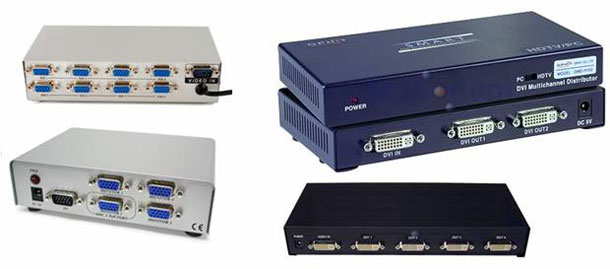
Pair multiple screens into a wider screen
If you want to merge multiple monitors into one big screen, according to the second use, the most basic is that you need to use the video card number corresponding to the number of screens you add. Note that some video cards have up to two communication ports that can run in parallel. So when attaching multiple monitors to a personal computer, you should use this type of card to minimize the number of occupied slots on your computer.
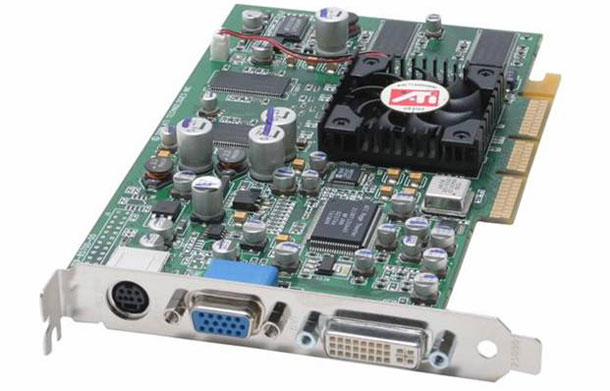
Most laptops come with an extended video port for you to add a monitor without having to add a video card. Depending on the model, it is VGA, DVI or mini Display port. In fact, you don't have a slot to plug a second video card into your laptop. However, if necessary, you can add an enhanced video card with a USB port with a KVJ 1920 VGA device ($ 137).
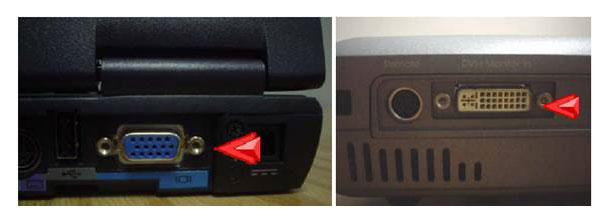
Operating system and support tools
Most current operating systems, such as Windows, Mac OS X and Linux, support personal computer users to use multiple video cards and multiple monitors at the same time to create a large screen. Some types of video cards also provide additional software to enhance the use of multiple monitors in two different display modes. Some popular multi-screen management software is:
- DisplayFusion (http://www.displayfusion.com), running on Windows operating system, Basic: free version, Pro version costs 25 USD.
- Synergy (http://synergy2.sourceforge.net), works on both Windows / Mac / Linux, for free.
- UltraMon (http://www.realtimesoft.com/ultramon), running on Windows, costs 39.95 USD.
- MultiMon (http://www.mediachance.com/free/multimon.htm), Basic: free version, Pro version costs 28 USD.
Two display modes
When using the device to share VGA Splitter as the first way, you can only use it in the only way that the screens are identical. With this second way of connecting hardware, which means that each monitor attaches to a VGA or DVI port, you will have the option to choose the type of display that connects the screens together or the same display. (Cloning).
And of course, when it comes to additional investment in scalable video cards, we will be interested in connecting the screens together. You will have to place the screens side by side, and your Desktop will show spread out on those screens. When the mouse comes out of the right side of the screen, it will immediately appear on the left side of the screen on the right.
So it looks like you have a very wide screen for multitasking, a text editor window, while the other window uses web surfing, reading email or playing games. Graphic experts often look at a picture in a window and adjust it on the other side window. With some games like Flight Simulator, you can also expand the game window to multiple screens, similar to you sitting in the cockpit of a real airplane.

And when needed, you can also reconfigure to display the same on every screen, even if they are mounted on different VGA or DVI ports. This method is often used when you give presentations with Power Point. It helps the presenter to look at a screen, and the listener looks at another screen, depending on his position.
Set up to use 2 monitors on 1 computer
Setup using multiple monitors on Windows 7:
Configuring to select one of these two display modes is quite simple. After attaching the monitor to your computer, restart the operating system. The new screen will be recognized and you can choose one of three ways to display on the secondary screen as follows: Duplicate my desktop (displaying the same content on both the main screen and the secondary screen), Show different parts of my desktop on each display (the main screen and the secondary screen will merge into a wide screen), and finally choose Show my desktop on the external display only (show the computer contents on the secondary screen only) .
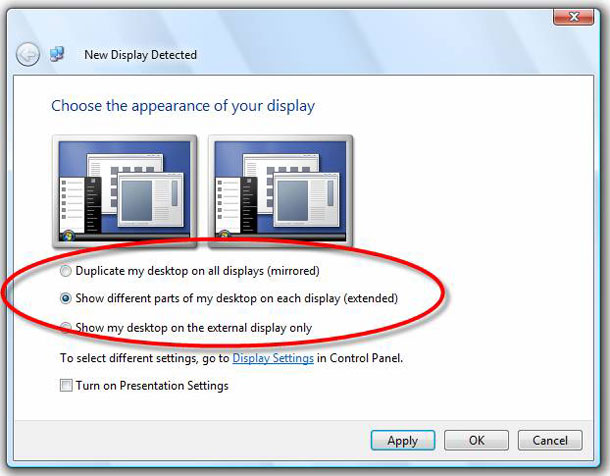
When you need to re-select the new display mode, right-click the Desktop screen, and then select Screen Resolution . To detect the new screen attached, click the Detect button. The new screen name when detected will be included in the Display section. You can choose to configure the resolution for each screen you have.
With Orientation , you can choose to have your screens horizontally (Landscape), or vertically (Portrait). To change the display mode between two screens, you use the Multiple displays section. There are four sections for you to choose from, which are two screen multiplexing modes (Extend these displays), displaying two identical screens (Duplicate these displays), or only one screen display (Show desktop on cups on 1, Show desktop on ly on 2).

For laptops, there is another way to quickly switch between the display modes of the two screens, so choose the Connect to a projector option directly below the selected items. A window will pop up so you can quickly choose between four modes: Computer only , Duplicate , Extend and Projector only . You will see the Projector in this menu as the second screen attached to the laptop's VGA port. If you are not in the Screen Resolution window, you can use the Windows + P shortcut combination to turn this menu on.
Set up to use multiple monitors on Windows 8 / 8.1 and Windows 10:
After connecting the screens to your computer, right-click on desktop> Screen Resolution to set up the main screen, the resolution for each screen.
- In Display : You select the screen you want to set, to select the screen that is the main screen, tick Make this my main display .

- Resolution : Select the resolution for the screen
- Orientation : Select the display type of the screen: horizontal, vertical, horizontal but overturned, vertical but reversed
- In Multiple displays : Select the type to use multiple monitors:
- Duplicate these displays: Repeat the image on the main screen for all monitors
- Extend these displays: Expand the screens, one after another
- Show desktop only on 1: Only display screen number 1, will have on 2, on 3, depending on the number of screens you connect to the device. In this article we only connect 2 monitors.
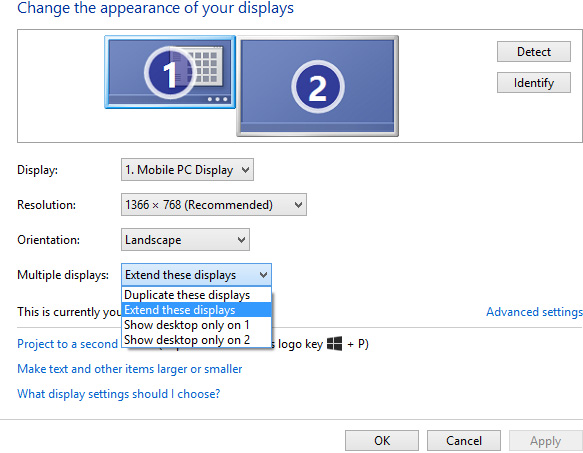
To project from the small screen to the big screen, select the Duplicate these displays option, if you want to expand the workspace, select the option Extend these displays. To display applications on the extended screen, you simply drag the part you want to display to that screen. In the screen expansion mode, the mouse will automatically switch to the next screen when running out of the boundary of the current screen.
There is a faster way to set up multiple screens is to press the Windows + P shortcut, here you will have some options like the picture. Choose the one you want.
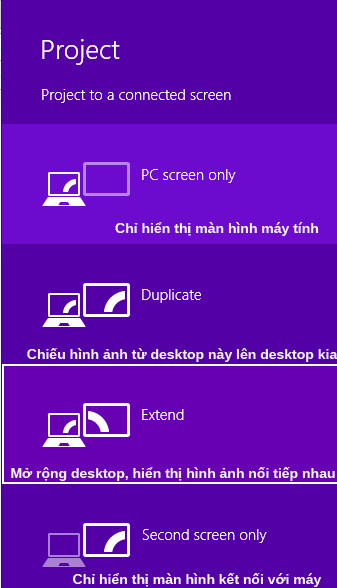
Tweak your mouse to multiple monitors
Finally, tweaking your mouse will also make your multi-screen experience better. Speeding up your mouse significantly increases the speed of the mouse pointer when you hover at high speed. This is especially useful for quickly moving between screens.
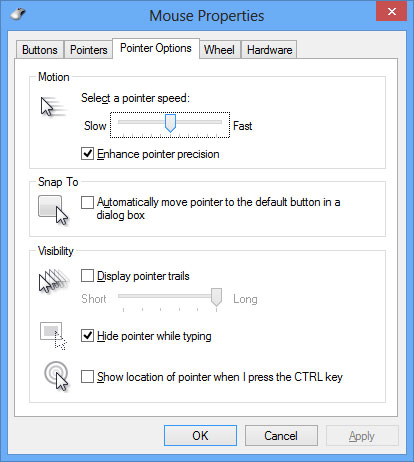
Some other mouse-related tweaks are changing the size and color of the mouse pointer to make it easier to distinguish. You should also click on the 'Show location of pointer when I press CTRL key' setting ( indicate the location of the cursor when pressing the Ctrl key ) in the Mouse Properties> Pointer Options section.
Some errors of using multiple monitors
Your intention is to merge two or three screens into a wide screen. However, the virtual widescreen you create will be blocked into individual parts by the gaps created by the edges of the physical screens. The images stretching through the two screens will be interrupted in the middle. So when choosing to buy, you should choose the type of screen with two sides as thin as possible. Most users of multiple monitors will place more noticed programs on the main screen, while less-used programs will be on the remaining screens.
But some programs fail when you run it on secondary screens, especially DVD movie applications. The reason is that DVD video playback applications often use overlay, which is programmed to work only on the main screen. When you bring the screen showing this DVD movie to the secondary screen, it will not show anything. Because of this error, most old games on a single computer can only run on the main screen, and fail when running on the second monitor.
See more:
- Instructions for connecting the projector to a computer, laptop
- How to connect laptop to TV?
- How to fix some errors connecting TV to laptop via HDMI port
You should read it
- How to fix the screen skew when using 2 monitors
- Two ways to pair the screen in Windows 7
- How to install 2 monitors on a Mac computer
- How to Set Up Two Computer Monitors
- How to adjust the light of multiple screens with the Twinkle Tray
- How to set the resolution for many Windows 10 screens
- How to use 2 monitors on Windows 10
- Choose to buy an old CRT monitor
May be interested
- Instructions on how to turn smartphones into monitors for computers via Wifi connection
 this article will show you how to use the spacedesk driver (completely free) to turn your android device into a secondary monitor for your computer via a wi-fi connection.
this article will show you how to use the spacedesk driver (completely free) to turn your android device into a secondary monitor for your computer via a wi-fi connection. - The Simplest Guide to Screen Classification
 depending on the purpose of use, you will choose the type of screen with the corresponding quality. refer to the way to classify computer screens through the sharing of hoang ha pc
depending on the purpose of use, you will choose the type of screen with the corresponding quality. refer to the way to classify computer screens through the sharing of hoang ha pc - Computer 2 monitors all in one
 the highlight of the product is equipped at one time with 2 high-resolution 1920x1080 ips screens of very good quality, including 1 external touch screen and 1 anti-glare (non-touch) screen inside.
the highlight of the product is equipped at one time with 2 high-resolution 1920x1080 ips screens of very good quality, including 1 external touch screen and 1 anti-glare (non-touch) screen inside. - Homemade youtuber 'portable' computer has two unique screens, weighing 10kg
 inspired by the touchbar bar on the macbook pro and a macbook pro concept with two monitors, the channel owner youtube anitomicals c has created a mobile computer with two screens that keep tech lovers interested.
inspired by the touchbar bar on the macbook pro and a macbook pro concept with two monitors, the channel owner youtube anitomicals c has created a mobile computer with two screens that keep tech lovers interested. - How to record computer and laptop screens with sound and edit videos
 besides taking screenshots, you can also record your computer screen to record impressive moments while playing games, instructions for installing software or livestream on your computer. refer to some computer screen video recording software and follow the instructions to learn how to record laptop and pc screens.
besides taking screenshots, you can also record your computer screen to record impressive moments while playing games, instructions for installing software or livestream on your computer. refer to some computer screen video recording software and follow the instructions to learn how to record laptop and pc screens. - How to increase the contrast on the Mac screen
 'increase contrast' is one of the many useful features in macos. it makes it easier for users with low vision to read computer screens, but anyone can use this feature to make the interface easier to read.
'increase contrast' is one of the many useful features in macos. it makes it easier for users with low vision to read computer screens, but anyone can use this feature to make the interface easier to read. - Top 6 Best Lock Screens and Wallpapers for Windows 10
 are you using a windows 10 computer and want to change its default wallpaper but are afraid to do it manually? do you want to refresh the screen, change to another image every 5 to 10 minutes? with the top 6 most beautiful lock screens and wallpapers for windows 10 below, you will be satisfied.
are you using a windows 10 computer and want to change its default wallpaper but are afraid to do it manually? do you want to refresh the screen, change to another image every 5 to 10 minutes? with the top 6 most beautiful lock screens and wallpapers for windows 10 below, you will be satisfied. - What types of screens are Retina, LCD, AMOLED, OLED ...?
 currently, there are quite a lot of screen technologies that are commonly used on phones such as retina, amoled, oled ... so, which smartphone screen technology is good? let's find out about the advantages and disadvantages of the common technology display standards in the article below to get an answer.
currently, there are quite a lot of screen technologies that are commonly used on phones such as retina, amoled, oled ... so, which smartphone screen technology is good? let's find out about the advantages and disadvantages of the common technology display standards in the article below to get an answer. - Distinguish between resistive touch screens and capacitive touch screens
 although it may be incomplete, there are two types of touch screens that most of us know: resistive touch screens and capacitive touch screens. they appear on expensive smartphones or tablets that allow responses with the lightest touches, multi-point support and often high response (unless you wear it).
although it may be incomplete, there are two types of touch screens that most of us know: resistive touch screens and capacitive touch screens. they appear on expensive smartphones or tablets that allow responses with the lightest touches, multi-point support and often high response (unless you wear it). - Instructions for basic operations with Dell computer monitors
 instructions on basic operations with dell computer screens such as: adjusting brightness, rotating the screen base, turning on and off the touch screen, how to reset dell computer screens...
instructions on basic operations with dell computer screens such as: adjusting brightness, rotating the screen base, turning on and off the touch screen, how to reset dell computer screens...










 Winja usage checks the safety of data
Winja usage checks the safety of data How to unlock your PC with a smartphone
How to unlock your PC with a smartphone 12 signs that your computer is hacked
12 signs that your computer is hacked How to check password strength
How to check password strength Google's new advanced security turn-on guide to not be hacked
Google's new advanced security turn-on guide to not be hacked The most basic insights to becoming a Hacker - Part 1
The most basic insights to becoming a Hacker - Part 1